The Force of Nature
On Random House Graphic's Gina Gagliano, one of the most important people in comics, for today and tomorrow.
The first thing you need to know about Gina Gagliano is that she loves to read.
This probably comes as no surprise. After all, she’s the Publishing Director of Random House Graphic, an imprint focused on graphic novels for kids and young adults at one of the biggest and most prestigious publishing houses in the world. Reading kind of comes with the territory!
That said, even relative to her position, she loves to read. Take this story Mark Siegel, the founder and Creative & Editorial Director of Gagliano’s former employer First Second, relayed to me when I chatted with him about his one-time teammate.
“She loves the medium, but she reads a ton of prose,” Siegel said. “When I met her, she still lived in Connecticut, and she was in a small town with a little library there and she was working her way through the entire contents of the library. And I think she was at the letter J or something.”

I asked Gagliano about this story, and like any good person in publishing, she had some edits to make as well as context to give. When she started at First Second, she couldn’t afford to live in the city the publisher was based, New York City. She was “very young” at the time, so she lived with her parents in her hometown, resulting in a daily commute of five or six hours. That gave her a lot of time to kill, so she decided that she would focus on “the literature section of the library.” It wasn’t the whole library, and she assured me it was a small branch. But it wasn’t J that she made it to during that six-month span of rigorous commuting.
“It was R or something like that.”
I don’t tell you this to underline Gagliano’s clear superpower of reading. Instead, it’s to highlight the passion she has for it. When we chatted on Zoom a couple months back, Gagliano had multiple piles of books near enough to sift through, sharing the books she had most recently enjoyed. Reading is connected to her work, but when asked about outside interests, it was the first hobby she noted, saying, “it remains a thing that I enjoy.” That’s to the point that when we stopped recording, she lobbied me to check out Tor’s novella program, particularly a series called The Murderbot Diaries. 1
When someone is such an effusive evangelist for stories, even when it’s for books she isn’t even publishing, well…isn’t that exactly the type of person we want working in comics? Someone whose passion for story is so palpable that you can’t hope to — or want to — resist it? I can’t imagine a better interest for someone who works in publishing, or a better person to work in that world.
That’s who Gina Gagliano is, though. A “force of nature,” as Siegel put it, and one who lives and breathes comics in a way few can truly match. She’s someone whose singular talents and unstoppable love for graphic novels have helped grow and shape the medium over the past 15 plus years, making her, in my opinion, one of the most important people in comics of this century — even if you may be unfamiliar with who she is and the part she played in doing that.
Gina’s passion for the written word has been a thing for as long as she can remember. That’s especially the case when paired with visuals, even if comics didn’t enter the picture until much later. Growing up in a small town that didn’t even have a bookstore until she was 10, Gagliano took what she could get, devouring whatever she could get her hands on. But there was just something about the ones that blended text and illustration — like the work of L. Frank Baum, whose Oz books often had spot illustrations — that popped in her brain.
While she was, and is, a huge fan of stories of all varieties, particularly science fiction and fantasy, when she read something like a fairy tale that would pair words with engraved plates or illustrations to lead off chapters, it just popped for her. Whenever she came across other examples of this, it just further reinforced that love. As she told me, “I was always like, ‘I’d like this to happen more.’”
If that was something she wanted, she found the perfect next chapter in her life. Gagliano went to Reed College, a small school in Portland, Oregon. While it’s an esteemed university, what it lacked was a robust fiction collection. And as someone who had already decided she wanted to pursue a career in publishing — “I just loved books that much” — she went and asked, “What is there to read at this library?”
She was presented two options: the literature section, which appealed but didn’t sound like the fun she was looking for, and joining the Comic Book Reading Room, a group that collected comics and graphic novels and managed an archive room just for comics. She visited this hang out spot designed just for comic fans and was met by names in the work from the world of science fiction and fantasy that she loved. She decided to try it out.
“That’s the point when I started reading graphic novels.”
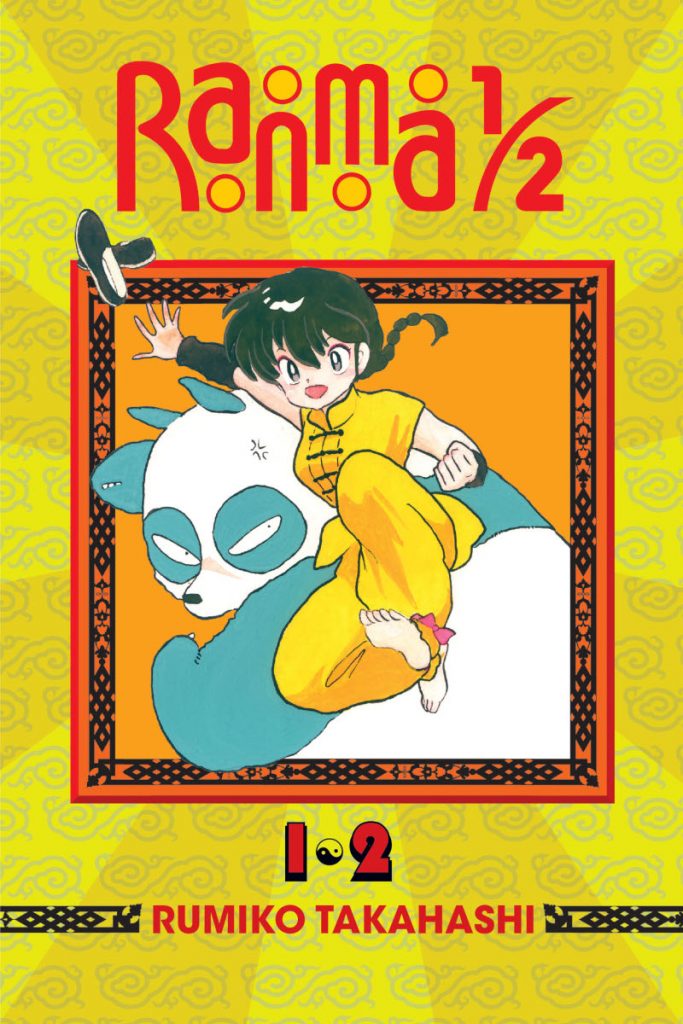
Reed’s collection set her on a path. While it was “very superhero focused,” it also housed collections of Ranma ½, Love and Rockets, and works from local publishers like Top Shelf and Oni Press. As Gagliano told me, she was “exposed to this breadth of comics media” there, and it created a real love for what the medium had to offer. She ended up running the comics reading room for two years, during which she tried to assess what the student body wanted more of, at which point she used her budget to build a collection that matched her audience. If that sounds like what a role in publishing could be, you’re not wrong. When she departed Reed, she handed her position off to Leigh Walton, another veteran from the publishing world. There’s an overlap there.
That time managing the collection gave her focus. While she would have been thrilled with any job in publishing, her passion for comics made First Second’s offer to join them feel like fate, in a way. That’s how Siegel read it, at least.
“It felt a bit like this is someone who shows up and is like, ‘Hey, this is my destiny.’” Siegel told me. “It’s not like, ‘I’m here to be interviewed.’ It was like, ‘I’m here to come on board.’”
First Second is now known as one of the best and brightest publishers in comics, a house that delivers graphic novels for readers of all ages at the highest of qualities. But when Gagliano came onboard, the publisher was a baby, comparatively. First Second launched in May 2006. She was hired on the marketing side in 2005, where she worked under Lauren Wohl, someone who was part of the original founding team at Roaring Book Press. Siegel told me he sees the roots of Wohl’s approach in Gagliano’s work, saying it was “a very human kind of marketing that used to be more prevalent in the business.”
“Gina benefited from having a really great mentor in marketing and publicity,” Siegel said.
Wohl wasn’t the only one Gagliano learned from. She described Siegel as “an amazing creative visionary who started out and was like, ‘We’re going to change the industry,” tasking her with the marketing and publicity side of that audacious goal. She viewed First Second’s vision as one where comics had a crucial role in “changing what reading could be in America.”
“I think Gina definitely saw the vision of First Second,” Siegel said. “I was basically selling a dream at first with nothing to show for it, which is hard to do. And some people can get inspired by that, but a lot of people don’t necessarily see what you see. And I felt with Gina, she very quickly saw what this wanted to be, which is a really rare quality.”
“That really influenced my thoughts and my entire career,” Gagliano told me about First Second’s overall perspective.
Working with Siegel and eventual Editor Calista Brill, 2 her own principles as a comics publishing professional were instilled during her time at First Second. Whether it was in how she viewed the potential of the medium or in how she values the creators themselves — “(Brill and Siegel) just value the authors they work (with) and care for them so much” — she carried those ideas with her going forward, saying specifically about creator management, “That needs to be a cornerstone of anything that I’m going to do in the industry…making sure that we’re doing the best by and for any creators that we work with.”
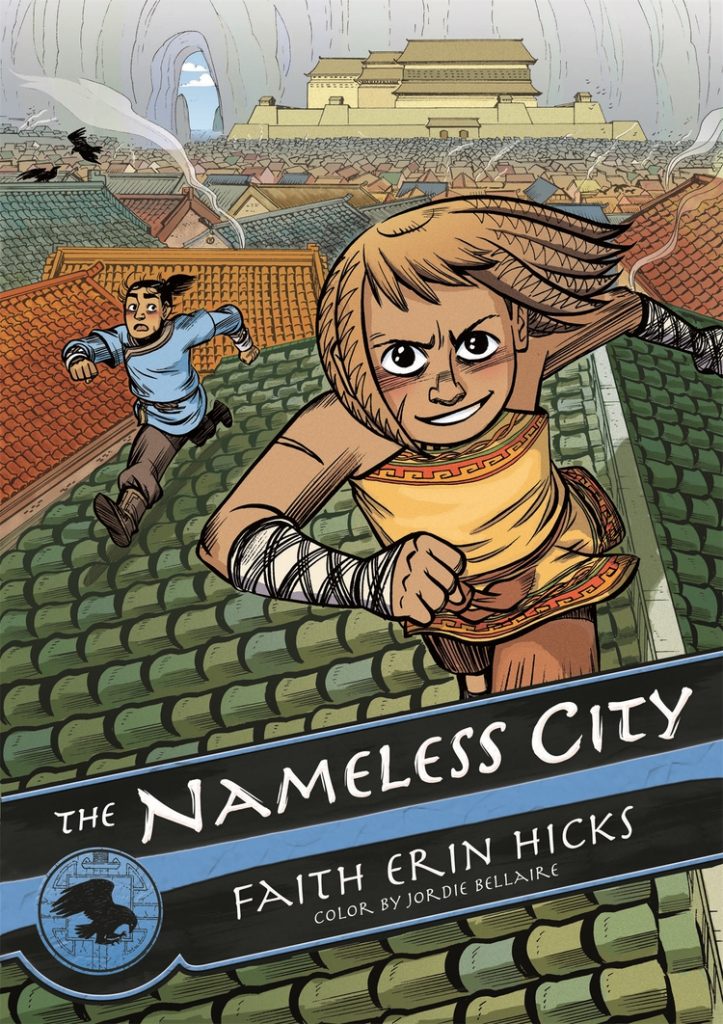
While developing her values was crucial to her future in publishing, her time at First Second was also important in that it was a role that asked her to do a little of everything, especially early on. The thing you need to realize about where comics were in 2005 was the kids’ comics boom was basically a twinkle in Siegel and Scholastic Graphix head David Saylor’s eyes at this point. Neither existed in a substantive way. Gagliano was in a nascent realm of the industry, with most bookstores and libraries lacking comic sections, while parents and librarians largely still believed in long-existing taboos surrounding the medium. As she told me, “The conversation was constantly about how to change that.”
That required an all hands on deck approach. While her title was always marketing and publicity related, she did everything from building personal connections in each of the publisher’s core markets and building out presences at disparate events like San Diego Comic Con, BookExpo and the American Library Association Annual Conference to helping identify and acquire the next great graphic novel. Siegel described her as a “pillar,” and someone whose energy was “perfect for our start-up years” where roles were fluid and overlapping.
“What she brought was this super zealous will to champion every single book in our list, so every book would get her care and attention on the marketing and publicity,” Siegel told me. “Also, I think she understood this idea that we were advocating for the form itself.”
That was one of the things that struck me when I first started writing about comics as a hobby. I engaged with a lot of marketing and publicity people, seeing a little bit of every approach there is, from the press release to more personalized missives. But no one seemed to feel more passionately about a book being a fit than Gina did. When she told me I should read something, it didn’t feel like pitching; it felt like someone who knew what was right for me. As The Beat’s Heidi MacDonald shared, Gagliano knew how things could work for folks on our side of the table.
“I think from the start Gina had a deeper instinctive knowledge of how the pieces worked – but more importantly, a vision of how they could work,” MacDonald told me.
MacDonald herself has long been an advocate for the medium for comics, and more than that, its potential. She “had a vision for” what “comics could be,” something that’s come true since thanks to the efforts of people like Gagliano.
“I think Gina’s vision came from an even more evolved place and has been even larger in scale…and it’s been a success,” MacDonald said. “We’re getting closer all the time.”
Whether it was advocating for Gene Luen Yang’s American Born Chinese to be (successfully) considered by the National Book Awards or pushing for the ascent of kids’ comics, MacDonald has seen Gagliano do the work. She also saw a person with the potential for more if it came calling.
“I’m not sure Gina was ever a publicist in the classic sense of the word, but she was already putting the pieces together to be a publisher, bringing in libraries, press, conventions and really the totality of the industry – in other words building a new marketing strategy that has helped change the industry.”
In May of 2018, Gagliano found the right opportunity to blend everything she learned together. Random House announced Random House Graphic, a new kids and young adult graphic novel imprint, that month, with the industry veteran leading the way as Publishing Director. It just made sense, MacDonald told me.
“I think we were all ‘Of course!’” MacDonald said. “It was pretty obvious that Gina had the chops to not just be an editor but a publisher and her track record at First Second – even though she was in marketing there – showed that. There was no one better suited to running their own imprint.” 3
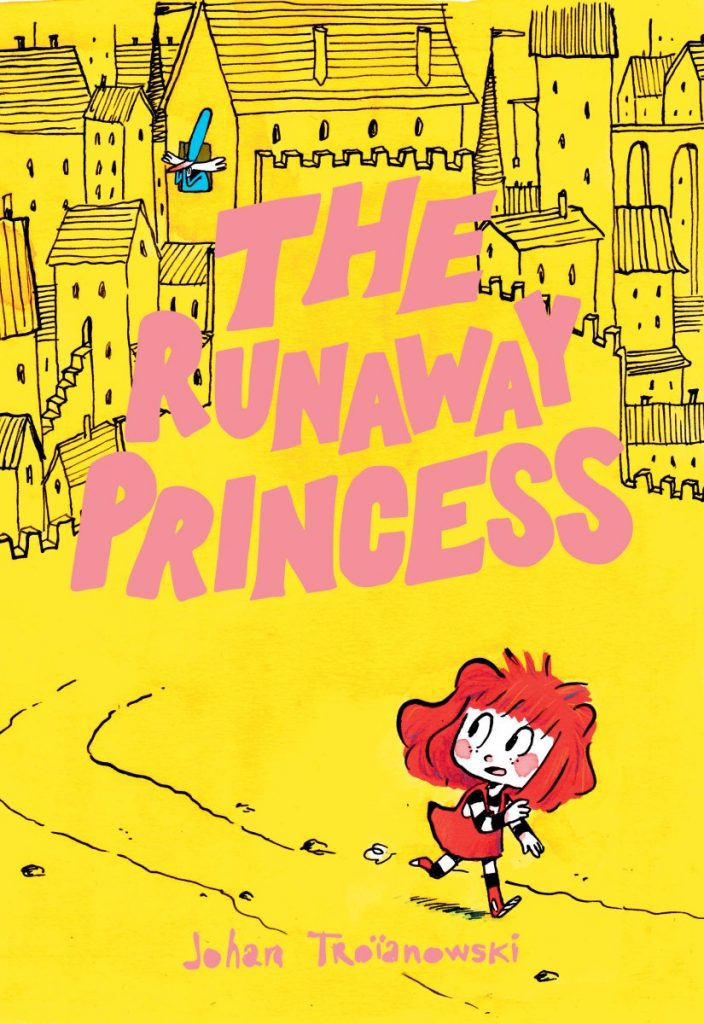
Even Siegel was onboard, despite this meaning her departure from his team at First Second. He said that “good competition that pushes the form up in any house is good for everybody.” And he knew she would crush it at RHG, if only because of Gagliano’s singular nature.
“I’ve never met a Gina before or since. There’s only one of her,” Siegel said. “I think her work at her imprint is going to reflect that.”
That’s clearly the case after the first year plus of published releases there. The role of Publishing Director has proven to be a snug fit for Gagliano, as she quickly found success in an increasingly competitive market. Despite a first year with as many challenges as one could possibly imagine, as the imprint debuted shortly before the pandemic with Johan Troïanowski’s The Runaway Princess, Random House Graphic had an exemplary inaugural year. From a stellar list of releases that included a new book from cartoonist Lucy Knisley and an English language translation of Thom Pico and Karensac’s Aster series to Trung Le Nguyen’s exceptional debut graphic novel The Magic Fish earning a spot as one of YALSA’s Great Graphic Novels for Teens, this new kids and young adult line connected in a major way.
Building a successful launch came from Gagliano’s efforts to ensure Random House Graphic reflected different viewpoints. That means a lot of meetings. The good news is, Gagliano noted to me she “actually really (does) like meetings.” She described her role as Publishing Director as having a third of a puzzle, and the only way she can get the rest of the pieces is by engaging with people on her team and around the industry. Learn a little about what the market looks like, you get a piece. Talk to an author, pick up another one. Her days are filled with experiences like that, talking with anyone and everyone on a daily basis, from her own team at RHG or people from its parent company at Random House Children’s Books to teachers, librarians, NPD BookScan and beyond.
A good example of that in action is managing in-development books. Here’s how she described it to me.
“Our Senior Editor Whitney Leopard is the point person on most of our books. It’s her job (on) each book to (make) sure that all the puzzle pieces for those books come together. And my responsibility there is more like, ‘Do you have all the resources that you need to do that?’ So in those cases she’s providing 95 parts of the puzzle, and I’m providing five, and the five are (me saying), ‘You did such a great job!’
Sometimes things are more complicated than that. Sometimes there’s a question about something, or there’s something that she hasn’t done before, or there’s a change that we need to figure out like, ‘Okay, if this book is coming in later, how do we rebalance the list so that we’re not publishing too few books at this point, and too many books at this other point?” There are parts that I’m more or less involved on, (but) when everything goes to expectations 100% of the time, then it’s just me kind of coming in to be like, ‘What a great Senior Editor you are, Whitney Leopard.’ Or ‘Senior Designer Patrick Crotty, what a fantastic job you’ve done with this cover.’”
Gagliano told me that publishing “is always collaborative,” and that is reflected in how Random House Graphic works. She wants “all the voices,” so it isn’t just her making unilateral decisions, but getting input from people like Leopard and Crotty and others like Marketing and Publicity Manager Nicole Valdez and Editorial Assistant Danny Diaz. That wasn’t always the case, of course, if only by nature.
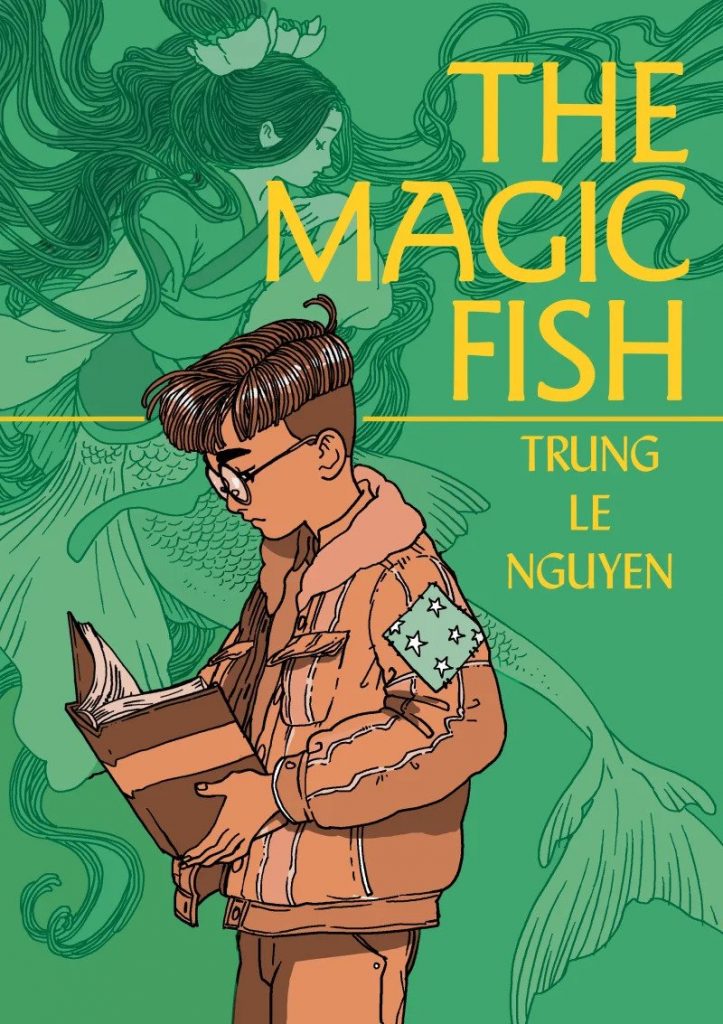
Nguyen’s graphic novel The Magic Fish was the first acquisition Gagliano made after Random House Graphic became an active concern, to the point RHG didn’t even have an editor on staff yet. It was Gagliano acquiring it and answering any questions Nguyen might have had early on, a process the cartoonist called “pretty hands-off.” Even with that in mind, Nguyen told me that with Gina attached, “I had a lot of confidence that this new imprint was in experienced hands.” That belief was emboldened once Leopard was hired, as Nguyen knew “Gina’s responsibilities at a new imprint are pretty dynamic and might shift a lot, so her bringing in more editors and delegating suggests to me that she’s someone whose leadership I can trust.” More than that, Nguyen recognized her efforts to make comics more inclusive, describing her as consistently “someone who acts on her values.”
“Anecdotally, as a creator I notice a lot of leaders in publishing tend to like to work out their values in outfacing avenues, which can be comforting to hear, but then after you wonder and wait to see how that politicking will be applied,” Nguyen told me. “As soon as I start wondering, as a creator from some marginalized backgrounds, whether the industry is moving in a more inclusive direction, Gina’s usually already doing the work. I notice her listening, making adjustments, and making room.”
The roots of that come from the ethos Gagliano developed while at First Second, which is reflected in Random House Graphic’s mission statement of a sort: “A graphic novel on every bookshelf.” She wants to explore all of the possibilities comics have to offer, as it gives you a better chance of reaching each reader. But there’s another part of that mission statement that connects specifically with what Nguyen said.
“The other piece of a graphic novel on every bookshelf…is promoting and championing diverse authors,” Gagliano said. “Because you can’t have a comic on every bookshelf without showcasing the full range of experiences that people of different races and identities and backgrounds in the United States have, and also showcasing authors from those different races and identities and backgrounds.”
That’s why Gagliano said that inclusivity is “vital to us as an imprint” and “to the industry,” even if she readily admits “there’s still so far to go.” Part of that stems from the publishing industry, which she described as “white-centered,” as so many hubs for book distribution like bookstores and libraries primarily cater to middle-class or higher white readers. The work Gagliano wants to do at Random House Graphic is more than just “publishing BIPOC authors” or “publishing books that are about BIPOC characters” and calling it a day. It’s ensuring that these graphic novels are “reaching readers of those identities” as well. Accessibility matters.
“Publishing doesn’t stop just because you have published the book successfully,” Gagliano said. “Part of a publisher’s responsibility is also, ‘How can we better reach readers?’”
Finding the right projects to take on and the right creators to work with is crucial to the arithmetic of accomplishing those goals. While doing that has undeniably been complicated by the pandemic, as almost everything is virtual these days, her team is still sniffing out every trail they can to build up Random House Graphic’s release list. Much of that comes from simply paying attention, whether that’s to social media and webcomics or to graphic novels they come across at conventions and creators they meet when the RHG team does outreach to schools. Increasingly, agents play a role finding new projects, as well. Gagliano described that as a change from the past five years, which can be advantageous for all parties, as she said, “agents can be great advocates for cartoonists.”
The disparate aspects of building a line play to her strengths. A whole lot of what they must do to find their next potential project is read, read, read. For some, that could be a burden. For Gagliano, that’s a perk. It has put her hobby in overdrive, even if it is still work. But it puts her and her team on a path to discovering the next great comic and introducing it to the world, something she absolutely delights in.
“One of the great things about starting this imprint is that I get to work with so many new people and connect them to so many new readers,” Gagliano told me.
When I asked Gagliano what she loves about comics, she lit up as she listed the reasons why. Her admiration of the marriage of words and images. Its versatility as a medium. The “geeky pop culture ethos” it carries with it. The industry itself, which she described as both small and supportive. How inspiring it can be to work with creators who “really care about the work they’re doing.”
More than that, though, she loves that it’s constantly evolving. The only constant of comics, beyond the medium itself, is its fluidity. That provides opportunity in Gagliano’s mind.
“It’s not an established industry where it’s just kind of like, ‘Okay, we expect this year to basically be the same as next year.’” She told me. “Things are changing so much in comics that it’s fascinating to look at how the industry has grown and evolved, and what to do to get it to a next step.”
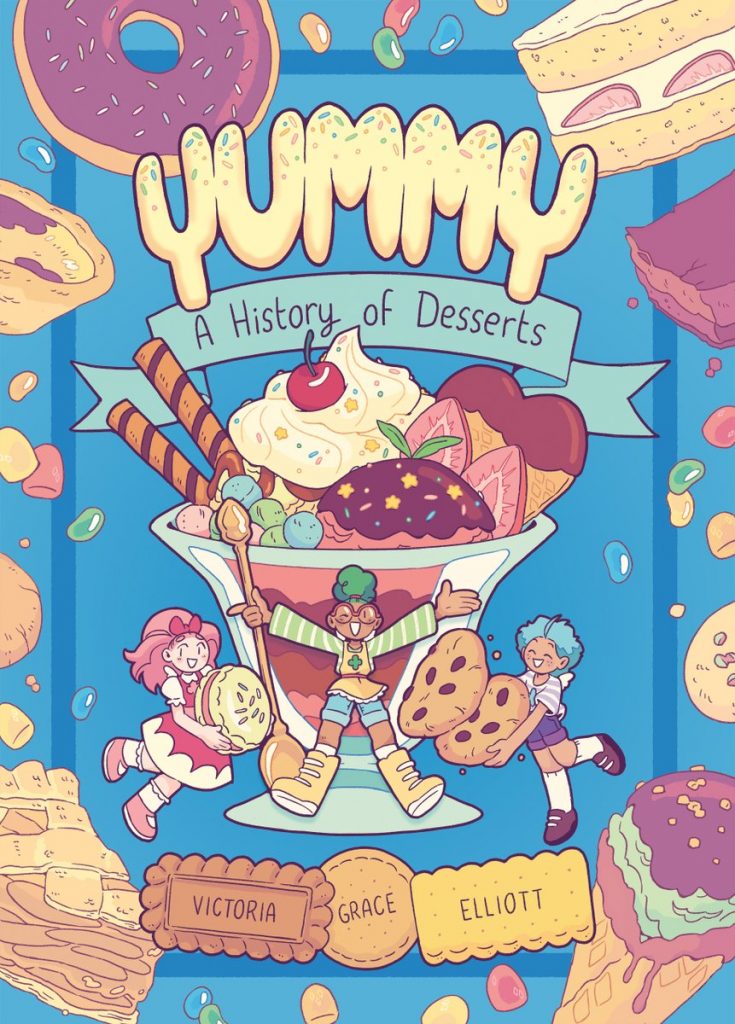
Tomorrow is something everyone in publishing is thinking about a whole lot, if only because of the time-shifted nature of the work. Gagliano told me her current work includes thinking of how RHG can repromote graphic novels from 2020, figuring out marketing and what’s next for 2021 releases, 4 managing 2022 titles as they’re turned in, 5 and signing up graphic novels for release in 2023, 2024 and even 2025. While she was cautious to speak for her peers, there’s a reason she told me other people she knows in publishing frequently forget what year it is.
But in a broader sense, tomorrow is on her mind because of what it could hold for comics in general. The comic industry of 2021 is a hugely different place than the one of 2005, when Gagliano first signed up at First Second. These days, libraries and bookstores are packed with graphic novels, with cartoonists amongst the biggest names in all of publishing. The medium is a huge part of our reading landscape in the United States, even if buy-in on reading isn’t as high as it maybe should be. She views comics as “part of the picture of changing that,” if only because “reading comics is really fun.”
“There’s so much educationizing of reading, that you only read to learn new things,” Gagliano told me. “And those things are all great, but I also want kids and teens and parents to be as excited about reading as the new season of their favorite Netflix show or new sneakers from their favorite sneaker company or something like that.
“It’s not all vegetables.”
With some people in publishing whose roots are in marketing and publicity, I might discount some of what she was saying as hype, turns of phrase designed to build excitement in an industry she’s a part of. Not with Gagliano. When she told me that, it was clear this was nothing of that sort. It was genuine belief, in the best of ways. That’s something Siegel noted about her view on comics, saying, “Her passion is totally real, and I think it goes beyond a commercial impulse.”
“It’s like there’s a sense of mission.”
Gina Gagliano loves to read, and to advocate for more people to do the same. I get the feeling that no matter what medium and industry she ended up, the same would have been true. Thankfully for comics, she became part of ours, a monumental win for the industry of yesterday, today, and tomorrow. While she’s the Publishing Director of Random House Graphic, I suggested to her that even beyond that position, it seems she is personally invested in bringing the best possible future to comics that she can. That’s definitely the case. She loves to read, and she wants everyone to discover what she already knows: that comics are in an incredible place, and that they have so much to offer everyone.
“I look at the comics industry as (an) interconnected ecosystem,” Gagliano said. “And I want the best for all the graphic novelists who are making these amazing comics and all of these publishers. (They) really care about what they’re doing, and they all work so hard, and I just think that they should all get all the best things. Which includes all of the kids and teenagers and adults loving these books, because such amazing work is happening in comics.
“Everything that’s out there should be read and loved by even more people.”
Did you enjoy this feature? Consider subscribing to SKTCHD for more like it, as it’s subscriber support that keeps the site running! Learn more on the Subscriptions page.
It was a successful attempt. I haven’t read them yet, but her pitch was convincing and it’s called The Murderbot Diaries. Who am I to resist such a gloriously titled series?↩
As well as the rest of the team there.↩
MacDonald used the fact that Gagliano goes to ComicsPro’s Annual Meeting, an event for comics retailers, as an example of how she had reached out to every level of the industry. Book publishers having presences there is rare, but Gagliano recognizes the value.↩
She told me about a Fall 2021 release by Victoria Grace Elliott called Yummy that tells the history of desserts, and the RHG team is already thinking about how they can connect the book with chefs and food writers. I am extremely into all of this.↩
When we talked in March, Gagliano estimated that almost half of that year’s releases were already in hand.↩
